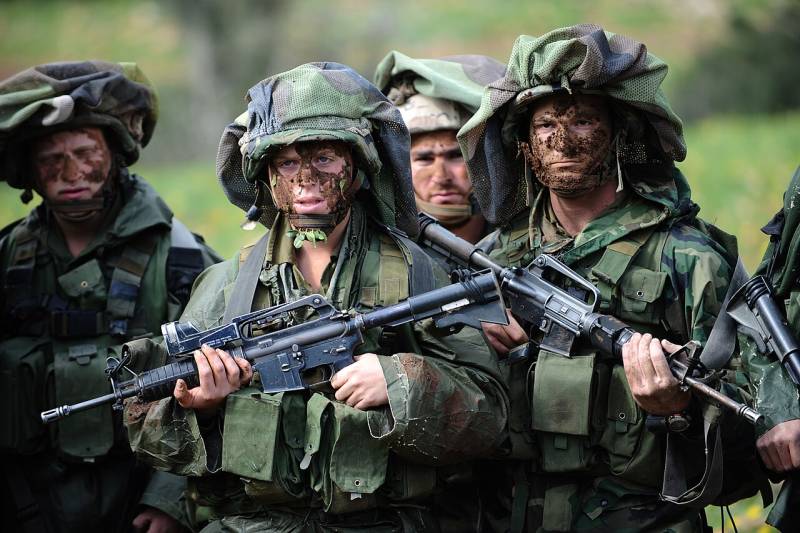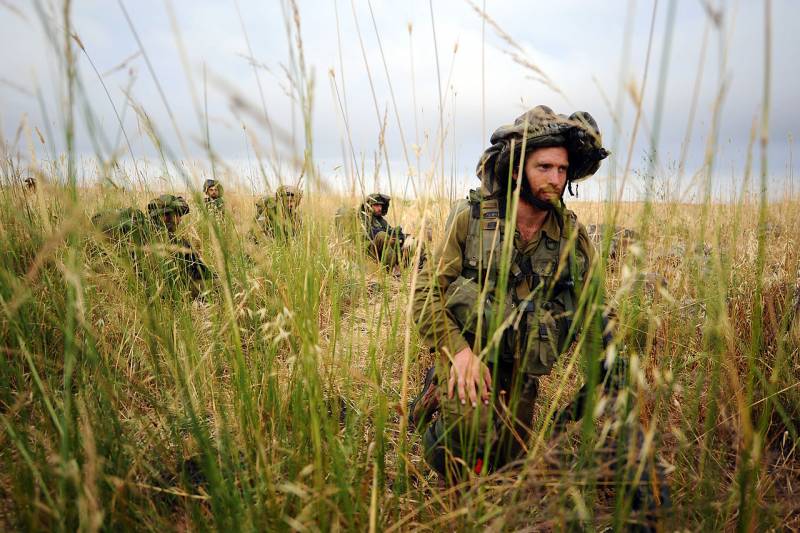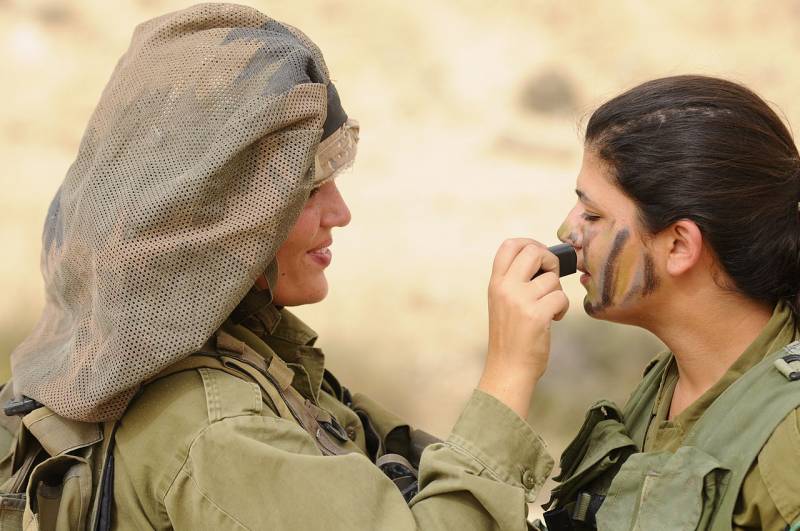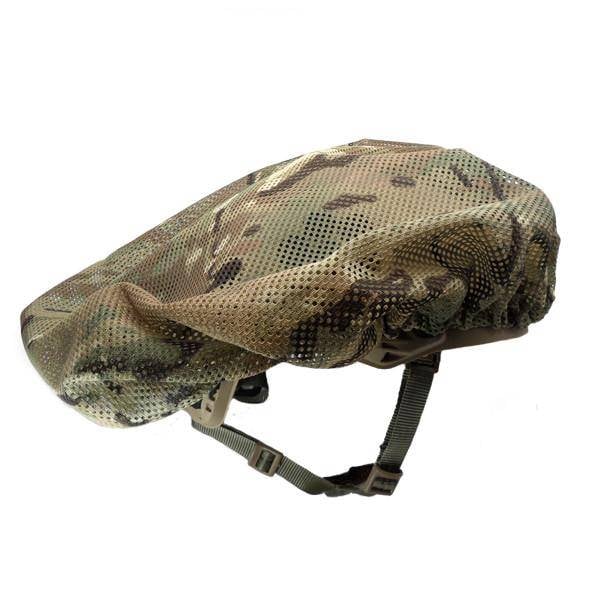Protection and camouflage: Israeli mitznefet

IDF soldiers in helmets with mitznefet, 2008
The Israel Defense Forces are built according to NATO patterns and on the basis of foreign products, which, among other things, affects the equipment of the fighters. However, the soldiers' field equipment has its own characteristic element - a special helmet cover called mitznefet. For several decades, these products have provided additional protection to soldiers from a variety of factors and threats.
Present and past
Israeli snipers and special forces, like their colleagues from other countries, have always paid special attention to camouflage. They tried to obtain or independently produce uniforms and equipment that best suited the natural conditions of the region. In addition, they had to take into account a number of additional characteristic factors.
In the second half of the XNUMXth century. A new item began to enter the army “fashion” in Israel - a cover for a soldier’s helmet of an unusual type, reminiscent of an overly wide beret. Despite its simplicity, it had several functions, due to which it allowed soldiers to more effectively solve assigned tasks and reduced risks for them.
In the first years of its existence, such a helmet cover was present in the equipment of fighters unofficially and did not have a generally accepted name. Due to its characteristic shape, it was called a chef's hat or even compared to elements of a circus clown's costume.

Soldiers in training - combined with vegetation, mitznefet makes them difficult to detect
By the mid-nineties, the “cap” showed and proved its usefulness, as a result of which the IDF command decided to officially include it in the soldier’s equipment. In 1994, general recommendations were developed, a standard design was formed and the necessary bureaucratic procedures were carried out. In addition, the headdress was given a single official name.
In accordance with linguistic customs and norms, the name for the modern “cap” was not invented anew, but was taken from the vocabulary of ancient Hebrew. It was given the name mitznefet (literally “to wrap” or “wrapped”) - this is what the headdress of the Jewish high priest was called at the beginning of our era. It is curious that ancient and modern Mitznefet are not very similar to each other.
Supplying armies
After official acceptance for supply, the IDF began to massively purchase mitznefet and distribute them to combat units. For obvious reasons, the main recipients of such equipment were infantry units, snipers and special units. The new covers were used in conjunction with existing helmets and quickly became the calling card of the Israeli military.
Other armies of the world, incl. from the Middle East region, did not appreciate such a novelty and did not adopt the Israeli experience. However, their fighters are not left without the necessary means of camouflage and additional protection - products of a different kind are used for this.

Female soldiers are preparing for a training battle. You can estimate the size of the mitznefet
It is curious that headdresses similar to the mitznefet appeared among the IDF’s worst enemy, the military wing of the Palestinian movement Hamas. His fighters appeared at various public events wearing characteristic wide berets. However, unlike Israeli soldiers, they usually use their mitznefet as a headdress, and not as a helmet cover. There are also some minor differences in appearance.
interesting news Mitznefts were reported in mid-2015. At that time, a number of foreign states provided the Kyiv regime with various military assistance, mainly in the form of uniforms, equipment and other property. It became known that Israel sent a number of uniform sets to Ukraine. This batch, along with other products, included several dozen helmet covers. However, as far as we know, Ukrainian soldiers did not use such accessories.
Simple and complex
From a design point of view, mitznefet is an extremely simple product. Essentially, this is some kind of beret. There is a lower headband, worn on the head or on a helmet, and an upper part with a large diameter is connected to it. The top is soft but can hold some shape. The resulting product is worn on a helmet or head and simultaneously solves several problems.
In the past, mitznefet were made by fighters themselves from available materials. The existing camouflage fabric was used, incl. from old uniforms, camouflage elements, etc. Now these products are mass-produced and industrially using modern technologies and materials. Due to this, it is possible to obtain serious advantages over older cases.

Modern mesh mitznefet from Agilite International
Modern mitznefet are sewn from mesh material with the necessary mechanical characteristics. This cover retains all its properties and does not interfere with air circulation. In addition, the latest models use reversible products with different camouflage patterns on each side. By turning the mitznefet to the other side, the fighter gets the opportunity to work in a different area.
The lightweight fabric cover has several key functions. First of all, it's camouflage. The upper part of the mitznefet, crumpled and camouflage-colored, overlaps and breaks the usual silhouette of a head in a helmet. During battles on the ground, this seriously complicates the detection of a soldier and aimed fire at him.
Mitznefet also has a climatic function. A helmet cover is a kind of analogue of a wide-brimmed hat and protects its user from the sun. At the same time, it can be laid in the most convenient way. Mesh mitsnefet, with all the same capabilities, is well ventilated and reduces the risk of heat stroke or other negative consequences.
For specific conditions
All developed armies are armed with certain elements of uniforms and protective equipment for military personnel. Often, the armed forces of different countries use similar products and components of equipment that demonstrate the required level of performance, convenience, cost, etc. At the same time, each army strives to adapt common achievements and solutions to its requirements.

Helmet cover
Israeli mitznefet in general is a good example of this approach. Many armies have fabric camouflage covers for helmets, but such products differ from the Israeli one. They fit the helmet tightly and provide camouflage only due to the camouflage coloring. The IDF also had such cases, but several decades ago they began to be replaced with new means of an unusual appearance.
The standard soldier's helmet with mitznefet is believed to provide protection against several threats common to the Middle Eastern theater. A hidden fighter with such an accessory is more difficult to detect, and he, in turn, can remain in place or operate in open areas without risk to health.
However, the potential of mitznefet should not be overestimated. This product was adopted by only one army and was used to a limited extent by only one armed formation. Other armed forces showed no interest in him. Apparently, based on the totality of characteristics, this type of helmet cover has advantages only in one region and in specific conditions. In other areas of the planet, its implementation is simply impractical for economic and logistical reasons. And more conventional cases continue to be used there.
Information